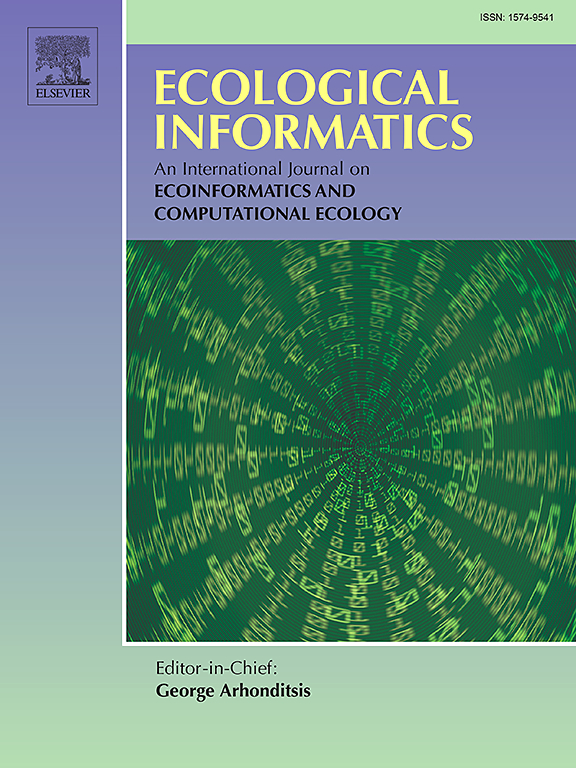基于SWAT+与可解释机器学习算法耦合的日流量预测比较研究
IF 7.3
2区 环境科学与生态学
Q1 ECOLOGY
引用次数: 0
摘要
近年来,气候变化对全球水循环产生了重大影响,导致极端水文事件的频率和强度增加。因此,开发更准确和有效的水文模型对于防洪、缓解干旱和可持续水资源管理至关重要。在本研究中,将4种机器学习(ML)算法与SWAT+相结合,对三水河流域(MRB)的水流进行了模拟。SWAT+衍生的水文变量和原始气象观测都被用作ML模型的输入特征,旨在提高预测性能。此外,采用SHapley加性解释(SHapley Additive exPlanations)方法量化不同特征对模型预测的贡献。在验证期内(2020 ~ 2023年),SWAT-Informer模型表现最佳,R2和NSE值分别为0.91和0.89。相比之下,使用DeepState和Bi-LSTM在流预测方面的改进不太明显,在测试期间性能明显下降,可能是由于其多层架构的复杂性。SHAP分析显示,降水是影响最大的特征,对预测的贡献率为29.1%。此外,SWAT+衍生的输出占预测能力的64.9%,突出了SWAT+在为ML算法提供信息特征方面的巨大价值。总体而言,四个SWAT-ML耦合模型在流量预测方面优于独立的SWAT+模型,表明ML技术在增强概念水文模型(如SWAT+)的性能方面具有相当大的潜力。此外,SHAP方法的应用提高了模型的可解释性,为研究人员和决策者培养了更多的理解、信任和透明度。本文章由计算机程序翻译,如有差异,请以英文原文为准。
Comparative study of daily streamflow prediction based on coupling SWAT+ with interpretable machine learning algorithms
In recent years, climate change has substantially affected the global water cycle, leading to an increase in the frequency and intensity of extreme hydrological events. Developing more accurate and efficient hydrological models is therefore essential for flood prevention, drought mitigation, and sustainable water resources management. In this study, four machine learning (ML) algorithms were coupled with SWAT+ to simulate streamflow in the Mishui River Basin (MRB). Both SWAT+–derived hydrological variables and raw meteorological observations were used as input features for the ML models, aiming to improve predictive performance. Additionally, the SHAP (SHapley Additive exPlanations) method was employed to quantify the contribution of different features to model predictions. During the validation period (2020−2023), the SWAT-Informer model exhibited the best performance, achieving R2 and NSE values of 0.91 and 0.89, respectively. In contrast, improvements in streamflow prediction using DeepState and Bi-LSTM were less pronounced, with a notable performance decline during the testing period, likely due to the complexity of their multi-layer architectures. SHAP analysis revealed that precipitation was the most influential feature, contributing 29.1 % to the predictions. Moreover, SWAT+–derived outputs accounted for 64.9 % of the predictive power, highlighting the substantial value of SWAT+ in providing informative features for the ML algorithms. Overall, the four SWAT-ML coupled models outperformed the standalone SWAT+ model in streamflow prediction, demonstrating the considerable potential of ML techniques to enhance the performance of conceptual hydrological models such as SWAT+. Furthermore, the application of the SHAP method improved the interpretability of the models, fostering greater understanding, trust, and transparency for both researchers and decision-makers.
求助全文
通过发布文献求助,成功后即可免费获取论文全文。
去求助
来源期刊

Ecological Informatics
环境科学-生态学
CiteScore
8.30
自引率
11.80%
发文量
346
审稿时长
46 days
期刊介绍:
The journal Ecological Informatics is devoted to the publication of high quality, peer-reviewed articles on all aspects of computational ecology, data science and biogeography. The scope of the journal takes into account the data-intensive nature of ecology, the growing capacity of information technology to access, harness and leverage complex data as well as the critical need for informing sustainable management in view of global environmental and climate change.
The nature of the journal is interdisciplinary at the crossover between ecology and informatics. It focuses on novel concepts and techniques for image- and genome-based monitoring and interpretation, sensor- and multimedia-based data acquisition, internet-based data archiving and sharing, data assimilation, modelling and prediction of ecological data.
 求助内容:
求助内容: 应助结果提醒方式:
应助结果提醒方式:


